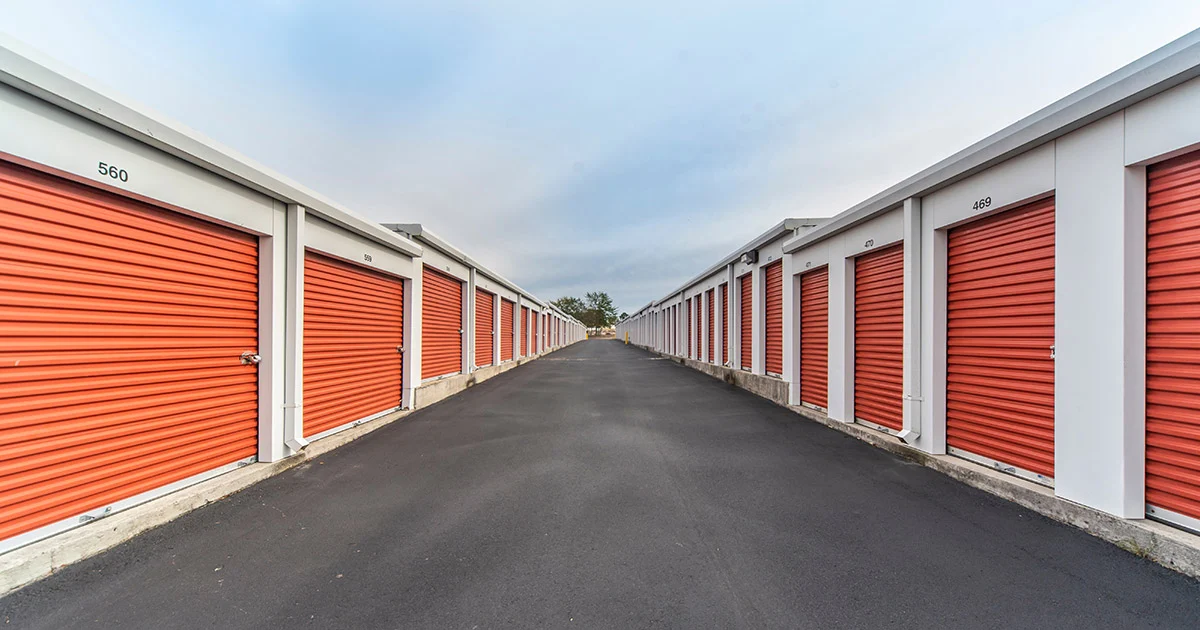Are Storage Facilities a Good Investment to Diversify Your Real Estate Portfolio?
At first glance, a small business that allows you to sit back and maintain operations with nothing more than a single employee at any one time seems like a pipe dream. However, this isn’t a vending machine business or a pop-up coffee station outside a busy library. We’re talking about self-storage facilities and whether or not they make sense for your future investment portfolio.
Nearly 1 in 5 Americans (about 20%) rent from storage facilities. Of those renters, it is a fair distribution between different generations, with Gen X (40-55 years old) leading the charge at 23% of renters keeping their goods in storage units. With most average storage units costing between $100-$300 in urban environments and the rising cost of purchasing a home to keep all your knick-knacks safe, it seems advantageous for storage investing.
Investing in Storage Facilities
Consumers like storage facilities because they are secure, video monitored for safety, and often climate-controlled spaces to keep furniture and other goods safe during a move, while they’re traveling, or if they have inherited a lot of items from the previous family.
You can invest in these extremely easy-to-manage systems in many different ways. The most straightforward method is buying shares in a publicly traded REIT (Real Estate Investment Trust). These funds are governed by companies doing all the hard work for you. They invest in the property and run the storage facilities, and you get a kickback on your investment based on revenue-determined returns.
Otherwise, you’ll need to purchase the property and building supplies, secure insurance, and acquire software to maintain a storage facility on your own. On average, you’re looking at anywhere from $25-$42 per square foot to build a single-story facility or $45-$75 per square foot for a multi-story system.
You would want to do a “feasibility” study of the demographics and population around your target storage facility, but let’s use a 20,000-square-foot building as an example. That would mean a base average cost of $500,000 to $840,000 to get started.
However, if you have 180 units at 10 by 10 feet each renting for $110 per month, you’re looking at close to $20,000 in gross revenue per month. You have extremely low operating costs because you’re only paying for the mortgage, electricity, insurance, HVAC, and a single worker per period.
Pros & Cons of Investing in Storage Facilities
All those numbers aside, why would you ever want to invest in something that is significantly more expensive upfront than, say, an Airbnb property or small coffee shop?
To start, self-storage facilities are recession-resistant. Whenever the economy shrinks, people downsize and want to find a place to put their stuff as they consolidate families or move into smaller apartments to save money.
In addition, you have low-maintenance properties with low-maintenance renters. No one will complain about a toilet that isn’t flushing or loud neighbors who interrupt nightly sleep patterns. All you have to worry about is electricity and maybe, depending on your area, HVAC.
If you do have to evict someone, you don’t have to wait for months due to landlord laws. You can usually auction off the unit in under 30 days and get it ready for a new renter in under an hour. That kind of efficiency allows you to automate practically all aspects of your business and minimize labor costs.
Finally, there are high-profit margins with storage facilities. You can buy cheap land where people will come to you. In fact, the less foot traffic around your small business, the more customers will view it as more secure.
All that being said, there are some downsides:
- It can be a costly endeavor to invest if you don’t have the startup capital.
- Electricity and HVAC are variable expenses. The higher the cost of electricity, the more your costs go up.
- Unless you have a monopoly on a set geographic area, you must market to maintain higher occupancy rates.
Should You Invest in a Storage Facility?
Looking at storage facilities from a purely fiscal perspective, yes, you should consider them for your real estate portfolio. There are extremely low expenses and high potential profits to be made as long as you can acquire space, build a property, and market the units to easy-to-acquire clients.
You can always start small by using a REIT first. That will get you accustomed to how the storage business operates. Then, you can develop a small business plan, maybe bring in some partners for investing, and integrate automation so the entire process is as streamlined as possible.
Before you do anything, conduct a feasibility study. Look at your target area first and be sure you have enough of a population to ensure a steady line of clients and that you are not oversaturating the market. This is a popular small business idea with high competition in certain areas.
When done right, storage facilities offer a viable investment that can pay returns for years to come. That offers you a great retirement plan and a strong asset that generates revenue to purchase other properties down the road. At the very least, it is worth looking closer at the idea for your target region.

